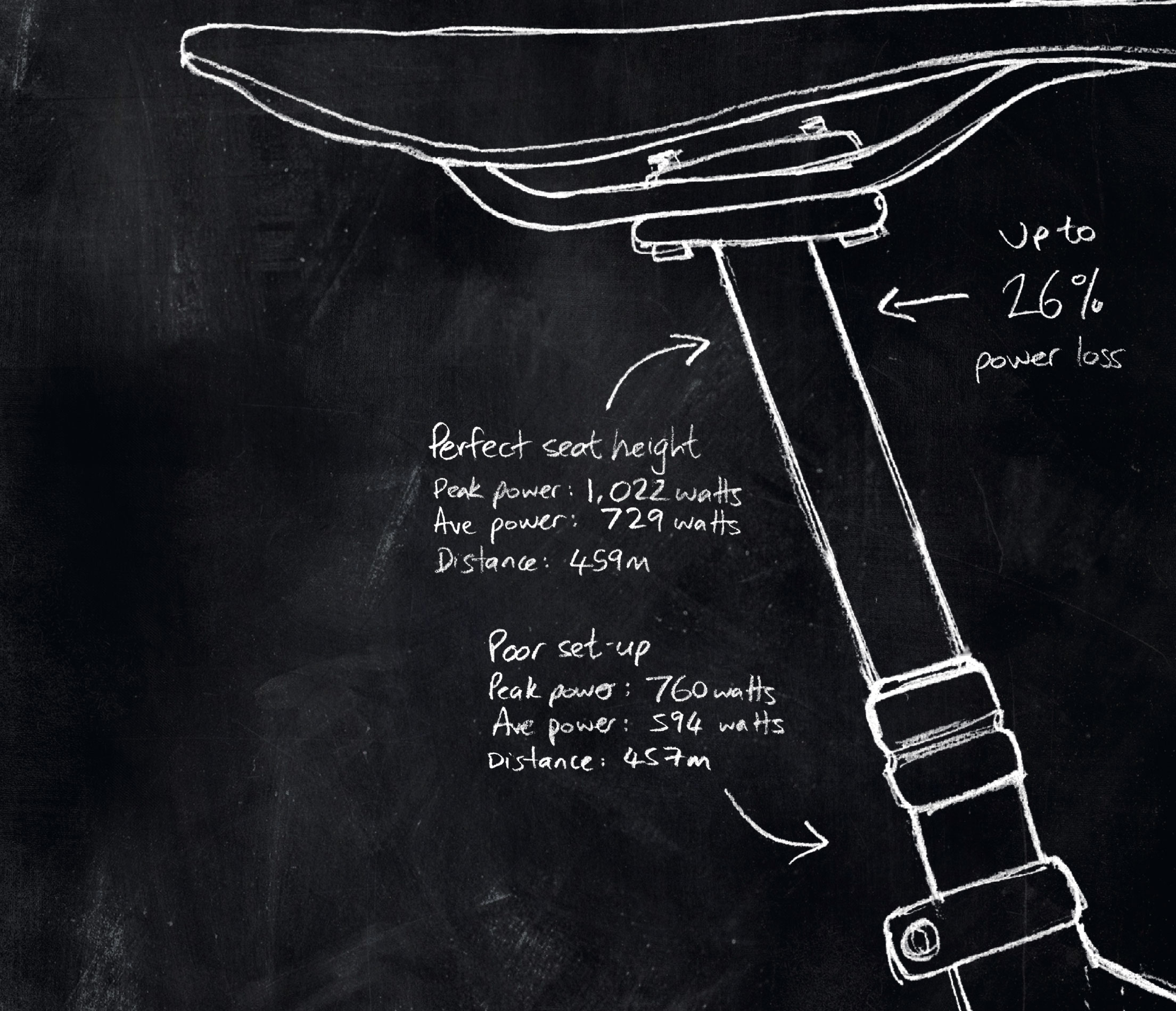The science of saddle height.
Set it your saddle height right and you’ll ride more descents in a day: get it wrong and your power will slide away.

Finding the perfect seat height won’t enhance your descents, but it will improve your ride by a mile — maybe literally in some cases — because the more power you can save, the more singletrack you can ride.
Until recently, it’s been difficult to work out just how much power you’ll lose. The Wattbike, however, eliminates the guesswork and dispels the sorcery. We jumped on one and spent an afternoon testing different seat heights either side of the perfect set-up.
What we found
Just small changes in seat height caused power outputs to slip away faster than a slick tyre on a muddy corner. The further we went, the more the outputs dropped away.
It’s potentially bad for us too, says sports scientist Will Harrison. The perfect saddle height delivered over 1,000 watts from our test mule, but it dropped to a mere 760 watts with just a 60mm drop in saddle height.
“A poorly set-up seat height means we’re either over or under-extending our knees,” he says. “It means we’re not using our leg muscles to their maximum, as we’re putting less power through the crank for a shorter duration on each pedal stroke.”
>>> Road bike rider, too? How to set your saddle height on a road bike here
How it applies to the trail
So what does all that technical stuff actually mean out the trails? “In a nutshell, our power output will drop and we won’t be able to put the power down as efficiently,” says Will. If we’re on a climb, it’ll mean we’re more likely to spin up, become unbalanced and have to submit to the walk of shame.

How to hit the sweet spot
- With your heel flat on the pedal, and the crank at the lowest position, make sure your leg is almost locked out. This means that when riding normally, leg-bend will be just right.
- Make sure you set your seat height while wearing your actual riding shoes. Sole depth will change the height the seat needs to be set at.
- Get a riding buddy to follow you on the trail and they’ll have a different perspective. If they can see your hips rocking, it’s a sign that your saddle is too high.



